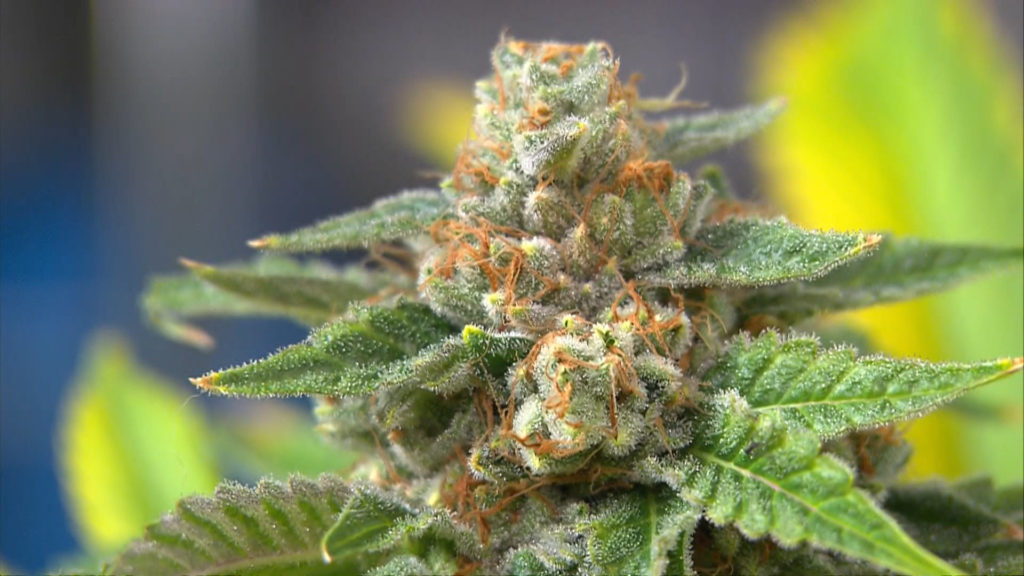From Bankable Insight
By Charles Seeburger
Whether it’s Black Market or Legal, Weed is a Serious Cash Crop
From the legal markets thriving in states like Colorado and Washington, to the underground trade that generates billions of Mexican cartels, the economics of weed are crazy.
Ganja. Smoke. Dro. Chronic. Spliffage. The names are as varied as the opinions about it: from rather innocuous plant, to cure all, to the bane of civilized existence. The truth is it’s here, it has been and it is likely only going to grow (see what I did there) in acceptance, availability, and use. From the completely non-intoxicating, but commercially and industrially useful hemp, to the best, make you think SpongeBob is funny, sticky, stinky, Electric Blurple from the trendiest Colorado or Washington “pot shop,” it all has an economic impact.
Here then are ten facts on the economics of marijuana.
10. It could be America’s largest cash crop
Ever since the mid 1980’s, advocates for weed have proudly pointed out that “pot is America’s number one cash crop.” As early as the middle 1980’s, High Times and NORML would regularly present estimates with marijuana at or near the top of the cash crop heap. Stoners would often point to Jon Gettman’s estimate of more than $35 billion. The California Bureau of Narcotics Enforcement puts the value of California’s crop alone at more than $17 billion. Both sources would seem to have reason to inflate these numbers. The facts concerning doobage being America’s largest cash crop are that it is incredibly difficult to properly quantify a mostly illegal product and that there is undoubtedly hundreds of millions, if not billions of dollars involved.
9. Legal weed in America is hurting Mexican drug cartels
Even before Colorado or Washington legalized recreational use, advocates had highlighted the potential for drug cartels to lose money. Since legalization has taken hold in those states, there has been a drastic decrease in cartel income from marijuana. Again, it is incredibly difficult to come up with actual numbers as cartels are notorious for keeping their balance sheets close to the vest, but a decrease in seizures from Mexico along with a serious cut in profits to Mexican producers can not be good for the bottom line. The fact is that legal weed is likely cutting into marijuana profits for cartels. However, criminal organizations are usually quickly adaptable, the cartels have and will turn to other nefarious means to make up for whatever financial shortfall they may suffer.
8. Incarceration of nonviolent users is expensive
Putting aside the overreach of jailing otherwise law abiding citizens for the possession and peaceful use of a fairly innocuous plant, the argument has long been made that the cost of jailing these folks is out of line and should stop. Given an American population of just over 318 million, of which18.9 million are regular users, at an average cost of over $47,000 a year in California to house an inmate, means it would cost of more than $888 billion to jail a fairly good percentage of your population. With a current American prison population of 2.4 million, we are going to need more new prisons than houses.
7. The criminal justice system has financial motivation to oppose legalization
How much are states that legalize marijuana losing in fines and seizures? According to the ACLU, over half of all American drug arrests are for marijuana. Most of these arrests result in fines for the convicted as jail space is at a premium. Certain states have “Drug Courts” that can either “expunge” minor convictions or lead to years of further expense and legal hassle, depending on behavior. It sure looks like a racket. Fighting a war on such a widely used substance also increases the need for policing. More officers are needed, and more equipment, which means more federal money to local police departments. Between court fees, probation fees, and federal incentives, the criminal justice community has a gravy train in prosecuting nonviolent pot offenders.
6. Legal weed means more tax revenue for communities and states
As we appear to be incapable of decriminalizing something just so we can enjoy a greater degree of liberty, let’s bring it out of the shadows and tax it insanely! There seems to be some fairly good empirical data here given the numbers ofstates that have or are in the process of loosening possession laws. Things that work become popular and Colorado’s $76 million in taxes, licensing, and other fees sure does seem like it’s working. These numbers do not include taxes on things like bongs, hotel rooms, black lights and Bob Marley posters, hemp necklaces, or halide light set sales. Washington came in with a less robust total but increases were expected despite rumors of a glut.
5. Hemp is the future
We have all heard a stoner or two bloviate about how “Washington and Jefferson grew weed.” That stoner is technically correct, but hemp is a rather different thing than the sticky, icky, that dude thinks Ben Franklin and the boys were blazing. If an acre of hemp will provide as much fiber as two or three acres of cotton, a farmer in the late 1700’s would have been daft not to plant some. Advocates seem to have a tendency to oversell its usefulness and it is difficult not to. The aforementioned Franklin used it for paper and today it’s used in molded plastics, composite automobile parts, food, and T-shirts. With Canada closing in on $1 billion worth of hemp production yearly and Canadian farmers making more than three times what an acre of soy will bring, it’s use will likely only increase. You can’t really get “high” from smoking hemp, but it sure would be a better fuel source than corn.
4. Kids have easier access to black markets than regulated markets
Even before Nancy Reagan warned us all to “just say no!” to drugs, a certain segment of the population was and remains staunchly opposed to any relaxing of restrictions on marijuana. Concerns about the wellbeing of children and their access to marijuana trump any rational consideration. Reports claiming higher usage among teens in places like Colorado are baseless, as rates of illegal use are nearly impossible to accurately quantify. The bottom line is if we wish to restrict access to marijuana for kids, we have to regulate it. You cannot regulate a black market substance. Drug dealers don’t ask for ID. They don’t care what age the person they’re selling to is. Kids have an easier time buying drugs off the street than they do beer from a store. All criminalization of any substance does is push the market underground. If we really want to restrict access, we need marijuana to be on the open market.
3. Weed is an emerging industry of new jobs
The past few years have been marked by sluggish job growth. With a dramatic decrease in both the number of new businesses and jobs created, it can be hard to find optimism. In Colorado, the Marijuana Industry Group estimates 10,000 new jobs have been created in the state. Everything from bud trimmers (who start at $15 an hour), to lawyers who specialize in making sure retail establishments stay on the right side of the law, there are a myriad new ways to make a buck. The best part is, these jobs were basically created from the ether. Entire new economies have been created by letting people be adults.

